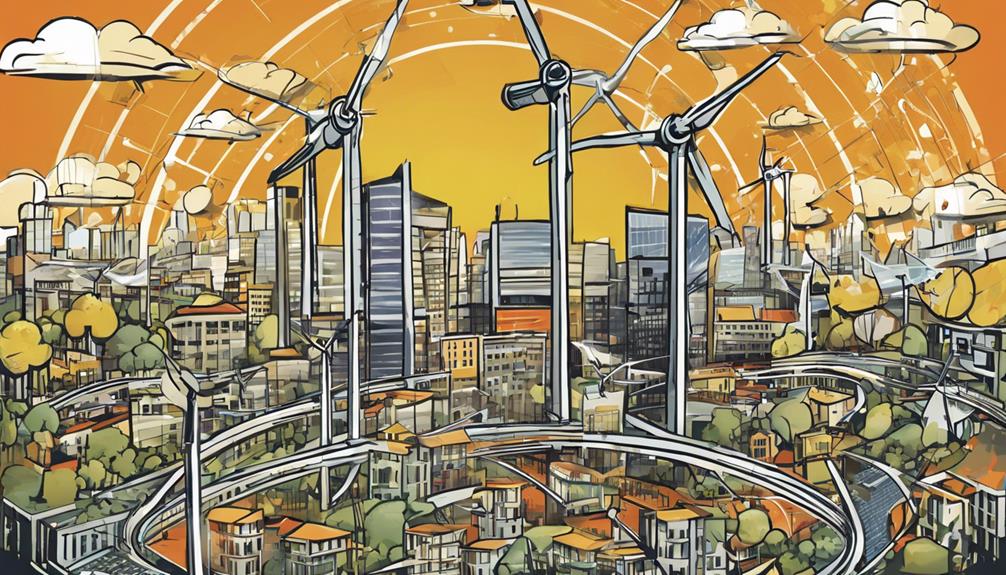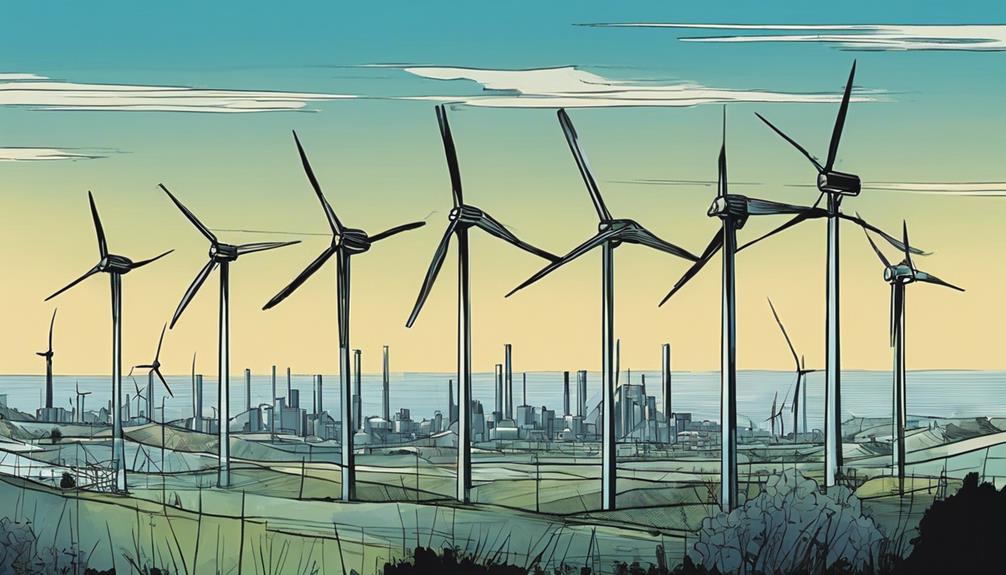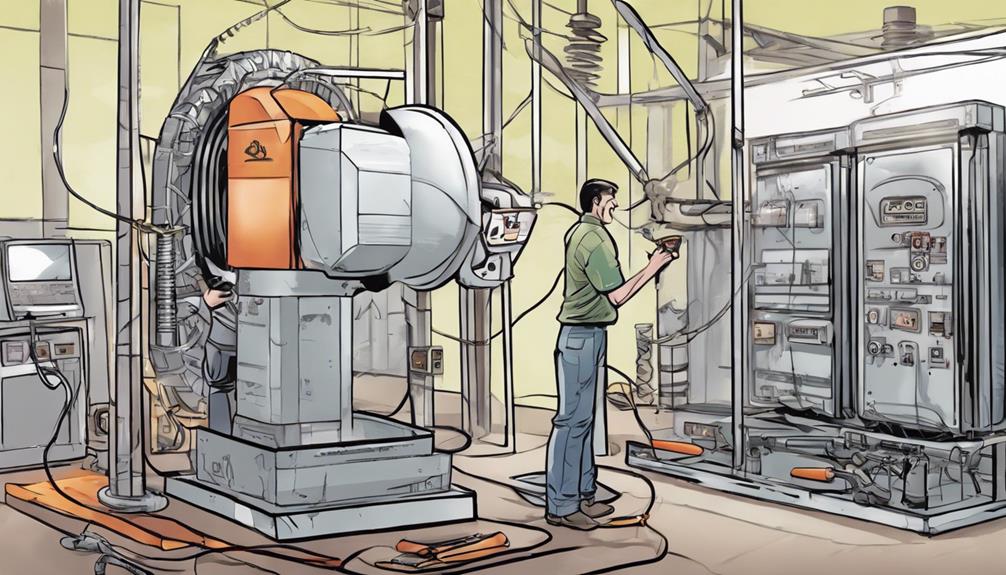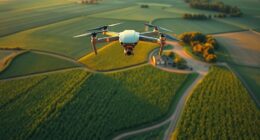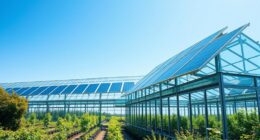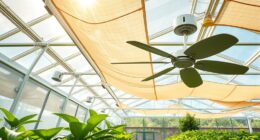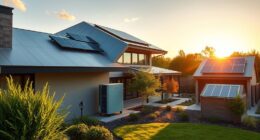When it comes to renewable energy, understanding the costs of wind turbines and solar panels is key. I've found that wind turbine costs depend on type, size, and land requirements, with larger models producing more power but needing more space. Wind conditions, maintenance, and transmission costs also impact the overall cost. On the other hand, solar panels have become more affordable due to tech advancements and increased production, making them a practical alternative. But there's more to it – the installation space and location, as well as transmission lines, play a significant role in determining the viability of these renewable energy sources.
Key Takeaways
- Wind turbine costs are affected by size, type, and land requirements, with larger models having higher price tags for increased power output.
- Transmission costs for wind turbines increase with distance from population centers, requiring more infrastructure and suitable land acquisition.
- Solar panel costs have decreased due to technology advancements and increased production, making them a more practical alternative to wind turbines.
- Installation space and location significantly impact wind turbine performance, with noise reduction and suitable wind conditions being crucial factors.
- Maintenance requirements and efficiency also influence costs, with solar panels having limited maintenance needs and wind turbines being affected by wind conditions.
Cost of Wind Turbines Explained

When it comes to wind turbines, the upfront cost is largely dictated by the type and size of the turbine, with larger models boasting higher price tags due to their increased power output and land requirements.
I've found that the design type, whether it's a horizontal-axis or vertical-axis turbine, also plays a significant role in determining the cost. Additionally, the amount of land required for installation is an essential factor, as wind turbines need ample space to operate efficiently.
It's clear that various factors, including size, type, and land requirements, all impact the overall cost of wind turbines. Understanding these factors is vital for making informed decisions when investing in wind energy.
Factors Affecting Wind Turbine Cost

I've found that installing wind turbines requires a significant amount of space, and factors like wind conditions and maintenance also impact their efficiency, ultimately influencing their overall cost.
The size and power output of the turbine are important, as they directly affect the installation costs. Additionally, wind turbines need to be placed in areas with suitable wind conditions to maximize energy generation. However, these areas may not always be close to population centers, increasing transmission costs.
Regular maintenance is also necessary to maintain peak performance, which adds to the overall expense. When considering wind turbines, it's vital to consider these factors to accurately determine the total cost of ownership.
Transmission Lines and Costs

How do transmission lines, an essential component of wind power projects, impact the overall cost of wind turbine installations?
Well, the answer is straightforward: transmission lines significantly escalate costs. The longer the distance between the wind turbines and the power grid, the higher the transmission costs. This is because more infrastructure is required to transport electricity over longer distances.
Additionally, acquiring suitable land for transmission lines can be a challenge, especially in areas with limited availability. As a result, wind power project costs increase.
It's important to take these factors into account when planning wind turbine installations to ensure the project remains economically viable. By doing so, we can better understand the true cost of wind energy and make informed decisions.
Installation Space and Location

Wind turbine installations require careful consideration of space and location to achieve best performance and minimal disruption to nearby communities. I've learned that noise levels need to be reduced by placing turbines away from residential areas.
In contrast, solar panel installation is relatively simple and can be done on most roofs, making it a more reachable option for urban areas. Evaluating roof location and orientation is vital for best sunlight exposure, but it's a more feasible task compared to finding suitable land for wind turbines.
Affordability of Solar Panels

Solar panel prices have dropped in recent years, making them a more accessible option for those looking to harness renewable energy. This downward trend is mainly attributed to advancements in technology and increased production. Consequently, solar panels have become a more affordable and practical alternative to wind turbines.
Some key benefits of solar panels include:
- Setting up is uncomplicated and demands minimal space, making them perfect for urban areas and residential rooftops.
- Limited maintenance requirements decrease operational costs and guarantee an extended lifespan.
- Cost-effectiveness is a result of technological advancements and increased production, resulting in a significant reduction in prices.
Frequently Asked Questions
How Do Government Incentives Impact Wind Turbine and Solar Panel Costs?
'I've found that government incentives greatly reduce wind turbine and solar panel costs, making them more accessible. Incentives like tax credits and grants offset initial investment, encouraging adoption and driving down prices.'
Can Wind Turbines Be Used to Power Individual Homes Directly?
"I'd love to harness the wind's gentle caress to power my cozy abode, but sadly, wind turbines aren't suited for individual homes due to space and noise constraints, making solar panels a more viable option."
Are Vertical-Axis Wind Turbines More Efficient Than Horizontal-Axis Ones?
Honestly, I think vertical-axis wind turbines are not more efficient than horizontal-axis ones; in fact, horizontal-axis turbines are more common and efficient due to their design, which allows for better energy capture.
Can Solar Panels Be Used in Areas With Heavy Shading?
I've wondered about using solar panels in heavily shaded areas – unfortunately, they're not very effective in such conditions, as shading greatly reduces their energy output, making them less viable in these areas.
Do Wind Turbines Have a Significant Impact on Local Wildlife?
Yeah, wind turbines can have a notable impact on local wildlife, especially birds and bats. I've learned that turbine blades can cause collisions, habitat disruption, and even alter migration patterns, so it's essential to take into account environmental effects during installation.
Conclusion
As I wrap up my exploration of the costs of wind turbines and solar panels, one thing is clear: the devil is in the details. From transmission lines to installation space, every factor adds up to make a significant difference in affordability.
While the upfront costs may seem steep, the long-term benefits of renewable energy make it a worthwhile investment. As the technology continues to evolve, the cost of going green will likely come down to earth, making it a no-brainer for individuals and businesses alike.




